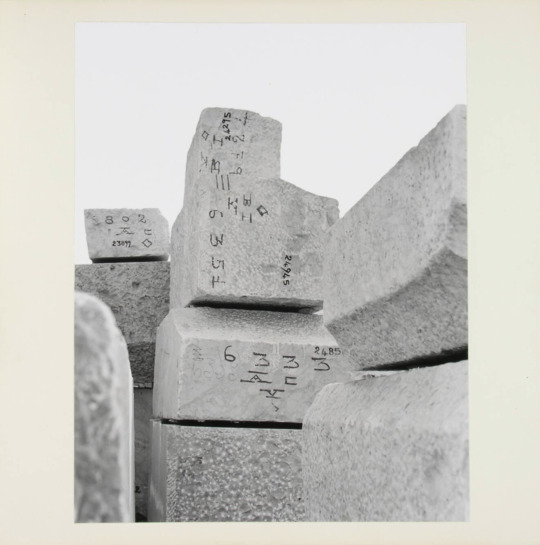#Hochschule Zürich
Text

zhdk, schließfächer
4 notes
·
View notes
Text
Innovation is advancing ecosystem restoration as a powerful nature-based solution to multiple global challenges.

14.30-15.30 - Panel Discussion entitled'' Innovation is advancing ecosystem restoration as a powerful nature-based solution to multiple global challenges.''
Keynote speaker: Tom Crowther, Eidgenössische Technische Hochschule Zürich (ETH)
Moderator: Khalil Walji, The Center for International Forestry Research and World Agroforestry (CIFOR-ICRAF)
Panelists
Tom Crowther, Eidgenössische Technische Hochschule Zürich (ETH)
Yelena Finegold, FAO Forestry Officer
Chetan Kumar, International Union for the Conservation of Nature (IUCN)
Adrien Leitoro, Nature and People as One
Fabiola Zerbini, Brazilian National Secretariat for Biodiversity, Forests and Animal Rights
#21 march#nature-based solution#fao forestry#panel discussion#international day of forests#International Union for the Conservation of Nature (IUCN)#Nature and People as One#Brazilian National Secretariat for Biodiversity#Forests and Animal Rights#Eidgenössische Technische Hochschule Zürich (ETH)#CIFOR#Center for International Forestry Research and World Agroforestry (CIFOR-ICRAF)
0 notes
Text
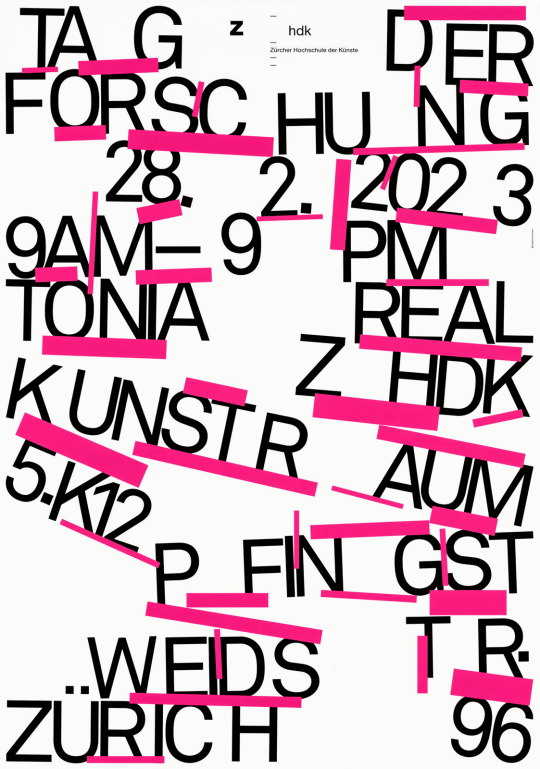
Viola Zimmermann, Tag der Forschung 2023, Zürcher Hochschule der Künste (ZHdK), 2023 [Museum für Gestaltung Zürich]
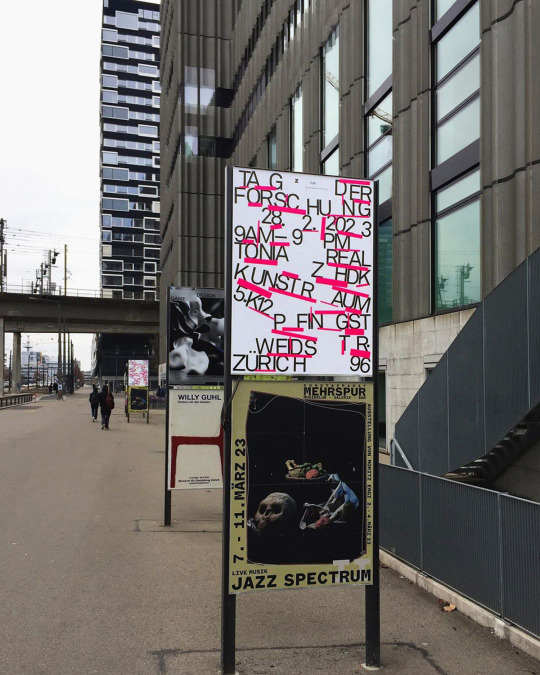
27 notes
·
View notes
Text
TOM WLASCHIHA HAT GEBURTSTAG Wie alt schätzen Sie den „Game of Thrones“-Star?
link: https://www.bild.de/unterhaltung/leute/royals/tom-wlaschiha-game-of-thrones-star-hat-geburtstag-84396664.bild.html
TOM WLASCHIHA HAT GEBURTSTAGWie alt schätzen Sie den „Game of Thrones“-Star?

Tom Wlaschiha 2019 beim Film Festival in Venedig
20.06.2023
Den meisten Prominenten sieht man es gar nicht an, aber auch sie werden älter.
Und dann steht auf der Tagesordnung: Partys, süße Kinderfotos und teure Geschenke! Doch wer feiert heute Geburtstag?
Heute, am 20. Juni, ist Tom Wlaschiha das Geburtstagskind. Lesen Sie einen Rückblick auf seinen Werdegang.
-----------------------
Tom Wlaschiha im Steckbrief
Name: Thomas „Tom“ Wlaschiha
Geburtstag und -ort: 20. Juni 1973 in Dohna (Sachsen)
Wohnort: Berlin
Beruf: Schauspieler
Beziehungsstatus: ledig
-------------------------
Tom Wlaschiha wird 50 Jahre alt
Tom Wlaschiha wurde am 20. Juni 1973 in der Nähe von Dresden geboren und wuchs dort auch auf. Nach dem Fall der Mauer machte er ein Auslandsjahr in den USA und erlernte dort die englische Sprache.
Von 1992 bis 1996 absolvierte er in Leipzig ein Schauspielstudium an der „Felix Mendelssohn Bartholdy“ Hochschule für Musik und Theater.
Von 1996 bis 1999 hatte er ein Engagement am Theater „Junge Generation“ in Dresden. 1999 spielte er im Fernsehfilm „Ich wünsche dir Liebe“ mit. Es folgte eine Rolle als Rettungsassistent in der Fernsehserie „Die Rettungsflieger“.
Im Jahr 2000 spielte er in einer Folge vom „ Tatort“ mit und ein Jahr später bekam er die Hauptrolle in der Komödie „Verliebte Jungs“. Es folgten mehrere Auftritte unter anderem in „Die Sitte“ und „Küstenwache“.
Neben der Schauspielerei beim Film ist er häufig am Theater tätig, unter anderem in Dresden, Zürich und Berlin. Außerdem arbeitet er als Synchronsprecher für Hörspiele und Werbung. Er spricht fließend Deutsch, Englisch und Russisch.

Tom Wlaschiha 2014 am Set vom Tatort „Borowski und die Kinder“ Foto: imago/STAR-MEDIA
Seine erste Rolle in einer internationalen Produktion bekam er 2001 im Film „Duell - Enemy at the Gates“. Es folgten Nebenrollen in Filmen wie „München“ von Steven Spielberg, „Operation Walküre - Das Stauffenberg Attentat“ und „Anonymus“.
2012 spielte er dann die Rolle, die ihn als internationaler Star bekannt machen sollte. 2012 und 2015 verkörperte er bei der HBO-Serie „Game of Thrones“ die Rolle des Jaqen H’ghar.
Seit November 2018 ist er in der Fernsehserie „Das Boot“ zu sehen. 2022 spielte er in der vierten Staffel der Serie „Stranger Things“ den russischen Gefängniswärter Dmitri Antonov.
Trotz internationaler Berühmtheit schafft Wlaschiha es, sein Privatleben weitestgehend aus der Öffentlichkeit fernzuhalten. Dementsprechend ist über den Beziehungsstatus des schauspielerischen Multitalents nichts bekannt.
Und heute wird der Schauspieler 50 Jahre alt. Alles Gute zum Geburtstag, Tom Wlaschiha!
11 notes
·
View notes
Text
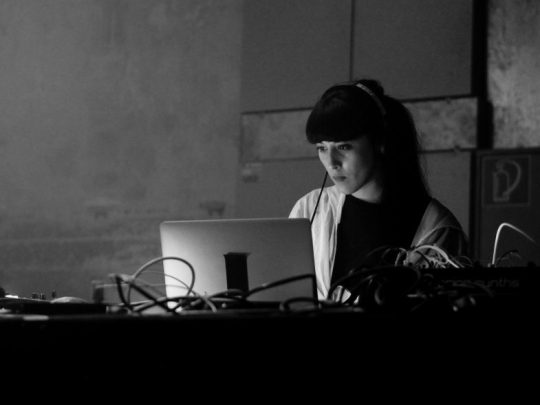
Annie Aries (Annie Rüfenacht)
source: anniearies.com
📸: ???
Live Set, Pulse of Techno, Photobastei Zürich, February 9
Live Set, Institute for Computer Music and Sound Technology (ICST), Zürcher Hochschule der Künste, February 10
Live Set, Modular Mondays, Montréal, February 12
Live Set, New York Modular Society, New York City, February 23
Live Set, Mayday, Providence RI, March 1
4 notes
·
View notes
Text
New trailer is out :)
Ab 12 Jahren
ca. 45 min
Körperbilder, Selbstwahrnehmung, Schönheitsideale plagen ihn – den Körper der auf die Bühne will.
Wie dem Blick des Publikums standhalten? Wie mit dem eigenen Körper umgehen? Angelegt als
Puppen-Spiegel-Figurenspiel beginnt eine Erforschung der Eigen- und Fremdwahrnehmung, ein Spiel
über Körperbilder und -ideale, ein Versuch, das Erwartete zu durchbrechen, um sich selbst frei und
vollkommen zu fühlen. Ein Schritt, eine Reise, eine Ermutigung.
Spiel, Regie, Konzept und Ausstattung: Lukas Schneider
Künstlerische Betreuung: Benno Muheim, Björn Langhans
Außenblick: Emil Fischer
Mentor: Florian Feisel
Sprachaufnahmen: Josephine Hochbruck
Musikalische Beratung: Almut Lustig
Bachelor Inszenierung im Studiengang Figurentheater Hochschule für Musik und Darstellende Kunst
Stuttgart in Kooperationen mit Das Weite Theater Berlin und Fitz Stuttgart, sowie einer Residenz im
Theater Stadelhofen Zürich
Gefördert durch die Senatsverwaltung für Kultur und Europa, Berlin
#puppeteer#figurentheater#puppetry#puppenspieler#figurenspieler#art#gaystuttgart#gayartist#gay male#body goals#body image#körper#schönheit#schönheitsideal#body positive#body neutrality
5 notes
·
View notes
Text

Discovering the Pinnacle of Higher Education: The Best University in Switzerland
Switzerland, renowned for its pristine landscapes and impeccable precision in all things, extends this excellence to the realm of higher education. Nestled in this picturesque nBest University in Switzerlandation is a university that stands as a beacon of academic brilliance and innovation: ETH Zurich. Widely acknowledged as the best university in Switzerland, ETH Zurich's reputation transcends borders, drawing students and scholars from around the globe. Let’s delve into the myriad facets that make ETH Zurich a paragon of higher learning.
A Historical Overview: Foundations of Excellence
Established in 1855, ETH Zurich—short for Eidgenössische Technische Hochschule Zürich—has a storied history rooted in the Enlightenment values of progress and knowledge. From its inception, the university has been dedicated to fostering a spirit of inquiry and scientific rigor. The institution’s commitment to pushing the boundaries of knowledge has remained steadfast, positioning it as a crucible for innovation and intellectual growth.
Cutting-Edge Research and Innovation
ETH Zurich is synonymous with pioneering research. The university is home to numerous research institutes and laboratories that are at the forefront of scientific and technological advancements. Whether it's the latest developments in quantum computing, groundbreaking work in renewable energy, or cutting-edge biomedical research, ETH Zurich consistently leads the charge.
The university’s research prowess is not merely theoretical but has practical implications that resonate on a global scale. Collaborations with industry giants and startups alike ensure that research outcomes are translated into real-world applications, driving technological advancements and economic growth.
Academic Rigor and Excellence
ETH Zurich’s academic programs are renowned for their rigor and breadth. The university offers a comprehensive array of undergraduate, graduate, and doctoral programs across various disciplines, with particular strengths in engineering, natural sciences, and architecture. The curriculum is designed to challenge students, fostering a deep understanding of their chosen fields while encouraging interdisciplinary exploration.
One of the unique features of ETH Zurich’s educational approach is its emphasis on independent research. Students are encouraged to engage in research projects early in their academic careers, cultivating a mindset of curiosity and problem-solving that is essential for success in today’s fast-evolving world.
World-Class Faculty
At the heart of ETH Zurich’s academic excellence is its distinguished faculty. The university boasts a roster of internationally acclaimed scholars, researchers, and industry experts who are leaders in their fields. The faculty’s dedication to teaching and mentorship ensures that students receive a robust and enriching educational experience. These educators not only impart knowledge but also inspire and guide students to achieve their full potential.
State-of-the-Art Facilities
ETH Zurich’s
commitment to providing a world-class education is reflected in its state-of-the-art facilities. The university’s campus is equipped with cutting-edge laboratories, advanced computing resources, and expansive libraries. These facilities provide students and researchers with the tools they need to conduct high-level experiments and explore complex theories.
For example, the Hönggerberg campus, dedicated to natural sciences and engineering, features modern research buildings and collaborative spaces designed to foster innovation and interdisciplinary interaction. The main campus in the city center, meanwhile, blends historic architecture with contemporary amenities, providing a stimulating environment for study and research.
International Community and Global Impact
ETH Zurich is a melting pot of cultures and ideas, attracting a diverse student body from over 120 countries. This international community enriches the learning experience, exposing students to different perspectives and fostering a global outlook. The university’s commitment to internationalization is further evident in its numerous partnerships with leading institutions worldwide, facilitating student exchanges, joint research projects, and global internships.
The impact of ETH Zurich’s research and educational programs is felt around the world. Alumni of the university occupy influential positions in academia, industry, and government, driving innovation and policy in various sectors. The university’s contributions to solving global challenges, from climate change to healthcare, underscore its role as a vital player on the international stage.
Entrepreneurial Spirit and Industry Connections
ETH Zurich nurtures an entrepreneurial spirit among its students and researchers. The university’s robust ecosystem for innovation includes dedicated support for startups, incubators, and access to venture capital. ETH Zurich’s Innovation and Entrepreneurship Lab (ieLab) is a prime example, offering resources and mentorship to budding entrepreneurs looking to turn their ideas into viable businesses.
Strong connections with industry further enhance the university’s impact. Collaborations with companies like Google, IBM, and Siemens, among others, provide students with opportunities to work on real-world projects and gain invaluable experience. These partnerships also ensure that ETH Zurich’s research remains relevant and applicable to current technological and societal needs.
Sustainability and Ethical Responsibility
In line with its forward-thinking ethos, ETH Zurich places a strong emphasis on sustainability and ethical responsibility. The university is committed to reducing its environmental footprint and promoting sustainable practices across its campuses. Research in sustainable energy, climate science, and environmental engineering are key areas where ETH Zurich leads by example.
Furthermore, the university instills a sense of ethical responsibility in its students, emphasizing the importance of using their skills and knowledge for the betterment of society. Courses on ethics and sustainability are integrated into the curriculum, preparing graduates to tackle global challenges with a conscientious and informed approach.
Student Life and Extracurricular Opportunities
Life at ETH Zurich is vibrant and dynamic, offering students a well-rounded experience that extends beyond academics. The university boasts a wide array of student organizations, clubs, and societies catering to diverse interests, from robotics and engineering clubs to arts and cultural groups. These organizations provide students with opportunities to pursue their passions, develop new skills, and build lasting friendships.
Sports and outdoor activities are also an integral part of student life. Nestled in the heart of Switzerland, ETH Zurich offers easy access to stunning natural landscapes, allowing students to enjoy skiing, hiking, and other outdoor pursuits. The university’s sports facilities are top-notch, supporting a range of activities from casual exercise to competitive sports.
Conclusion: A Beacon of Academic Excellence
ETH Zurich stands as a testament to Switzerland’s dedication to education, innovation, and excellence. Its rich history, cutting-edge research, world-class faculty, and vibrant student life make it a premier destination for those seeking to push the boundaries of knowledge and make a meaningful impact on the world. As the best university in Switzerland, ETH Zurich not only shapes the minds of future leaders but also contributes to the advancement of science, technology, and society at large.
Choosing ETH Zurich means embarking on a journey of intellectual discovery, personal growth, and global engagement. It is a place where ideas flourish, innovation thrives, and the future is shaped—one groundbreaking discovery at a time.
#Best University in Switzerland#study in canada#study in usa#study in france#study in uk#university in france#abroad education#study in germany#study in netherlands#university in canada#study abroad
0 notes
Text
„CO2-Magnet“: Neue Anlage minimiert Kosten bei der Entfernung von Kohlenstoffdioxid aus der Atmosphäre
Climeworks, Spin-off der Eidgenössischen Technischen Hochschule Zürich, ist Weltmarktführer bei Anlagen, die Kohlenstoffdioxid (CO2) aus der Luft angeln, um das Klima zu entlasten. Jetzt könnten die Schweizer Konkurrenz bekommen. Ein Team um Marta Hatzell, außerordentliche Professorin für Maschinenbau am Georgia Institute of Technology in Atlanta, hat eine Technik entwickelt, die 90 Prozent weniger Energie benötigen … https://bit.ly/3JRQY4C
0 notes
Text
Patente im Bereich Geoengineering

Patente im Bereich Geoengineering bieten gewaltige Gewinnchancen und sollen vor allem ökonomische und politische Macht sichern.
Patente für Geoengineering für Hegemoniesicherung
Patente bieten typischerweise gewaltige Gewinnchancen, auch wenn diese sich erst zeitverzögert realisieren lassen. Glaubt man den Apologeten des Geoengineering, so dienen diese Techniken und Technologien jedoch fast nur dem Umwelschutz.
In einer Welt, die zunehmend für Umweltprobleme sensibilisiert wird, sollen solche Patente dem Schutz unserer Umwelt und damit dem Wohle von uns allen dienen.
Warum sind Patente im Geoengineering wichtig?
Geoengineering bezeichnet Technologien und Methoden, die darauf abzielen, das Klima zu beeinflussen und den "Klimawandel" zu bekämpfen. Von solarer Strahlungsmanipulation bis hin zu Kohlendioxid-Abscheidungstechnologien gibt es viele Ansätze, um die Umwelt nachhaltig zu beeinflussen. Patente sollen Erfinder und Unternehmen ermutigen, in vielversprechende Technologien zu investieren, ohne die Angst vor Ideenkopien und Nachahmern.
Finanzielles Gewinnpotential durch Geoengineering-Patente
Mit Investitionen in Geoengineering-Patente wollen Unternehmen erhebliche finanzielle Gewinne generieren. Denn Patente sichern einerseits die ausschließliche Selbstverwertung, also die Konkurrenzlosigkeit. Damit ist es den Unternehmen möglich, Marktanteile zu sichern und Wettbewerbsvorteile zu erlangen. Durch die Exklusivität, die Patente bieten, können Unternehmen Lizenzgebühren erheben oder Partnerschaften mit anderen Organisationen eingehen, um ihre Technologien weiter zu verbreiten und zu monetarisieren.
Patente sollen den Umweltschutz fördern
Patente im Geoengineering bieten nicht nur finanzielle Anreize, sondern sie sollen angeblich auch den Umweltschutz fördern. Ob das wirklich so ist, lässt sich nur an konkreten Beispielen verdeutlichen.
Der Klimawissenschaftler Alan Robock warnte schon im Jahr 2008 vor möglichen Gefahren beim Einsatz von Geoengineering - wie beispielsweise
- Negative Auswirkungen auf Flora und Fauna,
- Verstärkung des sauren Regens,
- Missbrauch zu militärischen Zwecken...
Der Dipl. Dr. sc. nat. Physiker Philipp Zeller arbeitet an der Eidgenössische Technische Hochschule Zürich (ETH). Als Freizeitpilot beschäftigt er sich schon nahezu drei Jahrzehnte mit den Ereignissen am Himmel. Mehrere Jahre arbeitete er im Patentwesen. Dabei stieß er auf einige brisante Informationen, die er u. a. in nachfolgendem Vortrag ans Licht bringt. Ziehen Sie Ihre eigenen Schlüsse über die Folgen von Geoengineering!
Beiträge und Artikel anderer Autoren müssen nicht die Sichtweise der Webseiteninhabers widerspiegeln, sondern dienen nur der vergleichenden Information und Anregung zur eigenen Meinungsbildung.
Wie aufschlussreich fanden Sie diesen Artikel?
Lesen Sie den ganzen Artikel
0 notes
Text
Konrad Zuse

Konrad Zuse ⋆ Deutscher Computerpionier aus Berlin
Konrad Zuse (* 22.06.1920 in Berlin; + 18.12.1995 in Hünfeld) wuchs im ostpreußischen Braunsberg auf und besuchte dort auch das Humanistische Gymnasium. 1927 trat er in die Technische Hochschule Berlin-Charlottenburg ein, wo er Kurse im Bauingenieurwesen belegte. Dieses Ingenieursstudium weckte bei Zuse um 1934 sein Interesse an der Entwicklung eines mechanischen Rechengeräts.
Nach seinem Abschluss trat er der Henschel Aircraft Company bei, wo er an der Spannungsanalyse arbeitete. Insbesonders untersuchte er die Belastungen, die durch Vibrationen eines Flugzeugflügels verursacht werden. Seine Arbeit war mit viel Rechnen verbunden und so baute Zuse, um diese Berechnungen einfacher durchführen zu können, seinen Z1 - Computer im Wohnzimmer seiner Eltern.
Zuse stellte diese Maschine 1938 fertig. Sie war völlig mechanisch mit nur einer Recheneinheit, die aus einer großen Anzahl mechanischer Schalter bestand, und einem Speicher, aus Schichten von Metallstäben zwischen Glasschichten. Eine seiner innovativsten Eigenschaften aber war, dass die Einheit mit Hilfe eines Lochstreifens programmiert werden konnte.
Der Hauptgrund dafür, dass es Zuse gelang, einen mechanischen Computer überhaupt zu bauen, wo Andere versagt hatten, war die Tatsache, dass Zuses Z1 eine binäre Maschine mit zwei Positionsschaltern zur Darstellung von 0 und 1 war. Aber die Maschine funktionierte noch nicht besonders gut.
Zuses Pläne, einen größeren und besseren Computer zu entwickeln, den Z2, sahen daher vor, das gleiche Speichersystem beizubehalten, aber die mechanische Recheneinheit durch elektromechanische Relais zu ersetzen. Allerdings wurde das ganze Projekt durch den Zweiten Weltkrieg unterbrochen, als Zuse zum Militärdienst einberufen wurde.
Das Aerodynamische Forschungsinstitut des Dritten Reiches aber finanzierte seine Arbeit weiterhin und er vollendete den Bau des Z2, der noch ein Experimentalcomputer war.
Anschließend baute Zuse den Z3, den ersten Computer, der nicht nur zum Testen war. Die Rechner Z2 und Z3 waren elektromechanische Relaismaschinen mit einem aus Relais bestehenden elektromechanischen Speicher sowie ein elektromechanisches Rechenwerk.
Natürlich benötigte der Z3 viele Relais und tatsächlich enthielt er etwa 2600 Stück davon. Die Maschine war die erste betriebsfähige programmgesteuerte Rechenmaschine und wurde von der deutschen Flugzeugindustrie zur Lösung simultaner Gleichungssysteme eingesetzt.
Als dann Zuse einen auf elektronischen Ventilen basierenden Computer vorschlug, wurde der Vorschlag mit der Begründung abgelehnt, die Deutschen stünden sowieso kurz vor dem Sieg im Krieg, dass weitere Forschungsanstrengungen nicht erforderlich seien.
Einige von Zuses Computern wurden gegen Ende des Krieges bei Bombenangriffen zerstört. Zuse selbst begann dann 1942 erneut mit dem Bau eines neuen Geräts Z4. Aufgrund anhaltender Luftangriffe verlegte er aber seine Arbeit von Berlin nach Göttingen.
Schon nach wenigen Wochen aber drohte Göttingen von vorrückenden russischen Truppen eingenommen zu werden und die Z4 wurde erneut verlegt, diesmal in das kleine Dorf Hinterstein in Bayern. Die Z4 erhielt die Codierung Versuchsmodell 4 oder V4 und wurde im Keller eines Hauses versteckt.
Schließlich gelangte der Z4-Rechner in die Schweiz, wo er 1950 an der ETH in Zürich installiert wurde. Er blieb dort bis 1955 in Betrieb und wurde dann an ein französisches aerodynamisches Forschungsinstitut in der Nähe von Basel verlegt, wo er bis 1960 im Einsatz blieb.
Tatsächlich hat Zuse neben der Z-Serie noch mehrere andere Computer entworfen. Seine Computer S1 und S2 dienten der Berechnung der präzisen Maße, die für die Produktion von Flugzeugen erforderlich waren.
Beim S2 waren im Computer Messgeräte enthalten, um die Flugzeuge in der Produktion zu vermessen und diese direkt in die Berechnungen einfließen zu lassen.
Der von Zuse entworfene L1 -Rechner war für die Lösung logischer Probleme gedacht. Allerdings wurde davon lediglich nur eine experimentelle Version produziert, weitere Arbeiten an dieser innovativen Idee wurden nicht durchgeführt.
Zuse gründete schließlich 1950 ein eigenes Computerunternehmen, das 1967 vom Elektronikkonzern Siemens übernommen wurde. 1965 erhielt Zuse den Harry M. Goode Memorial Award, eine mit 2.000 US-Dollar dotierte Medaille.
1958 entstand der Z22 - Rechner, einem der ersten, der mit Transistoren ausgestattet war. Zuse forschte auch weiterhin an Computern und fungierte als Berater für Siemens, nachdem das Unternehmen 1969 die vollständige Kontrolle über Zuses Computerunternehmen übernommen hatte.
Neben seinen Hardware-Entwicklungen interessierte sich Zuse auch für Software und entwickelte bereits 1945 die erste algorithmische Programmiersprache »Plankalkül«.
Er nutzte diese Sprache, um ein Schachspielprogramm zu entwerfen. Obwohl die Sprache nicht weit verbreitet war, bildete sie später dennoch die Grundlage für weitere eine Generation, ALGOL, die schließlich zu einer weltweit verbreiteten Computersprache wurde.
Konrad Zuse ⋆ Deutscher Computerpionier aus Berlin
Read the full article
0 notes
Text
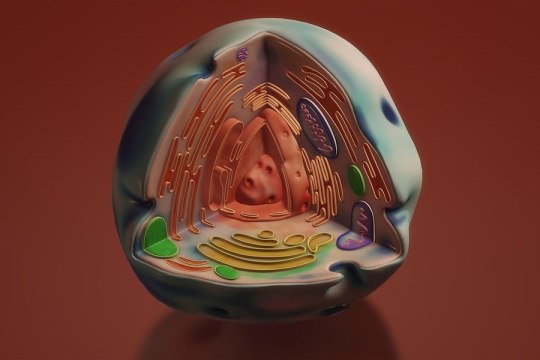
https://planet-today.ru/novosti/nauka/item/159998-mboc-shvejtsarskie-uchenye-nashli-novyj-organ-v-chelovecheskom-organizme?utm%5Fsource=yxnews
0 notes
Link
Time travel. We’ve all thought about it at one time or another, and the subject has been explored extensively in science fiction. Once in a while, it is even the subject of scientific research, typically involving quantum mechanics and how the Universe’s four fundamental forces (electromagnetism, weak and strong nuclear forces, and gravity) fit together. In a recent experiment, researchers at the University of Cambridge showed that by manipulating quantum entanglements, they could simulate what could happen if the flow of time were reversed. The research team was led by David Arvidsson-Shukur, a quantum researcher with the Hitachi Cambridge Laboratory (HCL) at the University of Cambridge. He was joined by Aidan G. McConnell, a Ph.D. student with Cambridge’s Cavendish Laboratory, the Paul Scherrer Institute, and Eidgenössische Technische Hochschule Zürich (ETH Zurich); and Nicole Yunger Halpern, an Adjunct Assistant Professor at the Joint Center for Quantum Information and Computer Science (QuICS) and the Institute for Physical Science and Technology (IPST) at the University of Maryland. Their paper, “Nonclassical Advantage in Metrology Established via Quantum Simulations of Hypothetical Closed Timelike Curves.” In the realm of quantum theory, entanglement describes when a group of particles are generated, interact, or share proximity in such a way that their quantum states become identical. As physicists have observed for over a century, these particles will remain in this state long after, even though they may become separated by vast distances (what Einstein referred to as “spooky action at a distance.”) This is the basis of quantum computing, where entangled particles are used to perform computations that are too complex for classical computers. Illustration depicting quantum entanglement between particles. Credit: ATLAS Experiment Whether or not particles can travel backward in time has also been the subject of considerable debate among physicists. While physicists have previously simulated models of how such “time travel” might occur, the Cambridge team took a new approach by connecting their theory to quantum metrology, which uses quantum theory to make highly sensitive measurements. As a result, the Cambridge team showed that entanglement can solve problems that otherwise seem impossible. Said lead author Arvidsson-Shukur in a Cambridge press release: “Imagine that you want to send a gift to someone: you need to send it on day one to make sure it arrives on day three. However, you only receive that person’s wish list on day two. So, in this chronology-respecting scenario, it’s impossible for you to know in advance what they will want as a gift and to make sure you send the right one. Now imagine you can change what you send on day one with the information from the wish list received on day two. Our simulation uses quantum entanglement manipulation to show how you could retroactively change your previous actions to ensure the final outcome is the one you want.” In their experiment, the team entangled two particles. The first was sent to be used in the experiment, while the second was maintained separately. The experiment then manipulated the second particle to effectively alter the first particle’s past state, changing the experiment’s outcome. To demonstrate the potential relevance of their experiment to quantum computing and other technologies, the team incorporated quantum metrology. In traditional metrology experiments, photons are prepared before being introduced onto a sample and then registered with a special camera. Their results showed that the team can use time travel simulations to retroactively change the original photons, even if they only learn how to prepare the photons after reaching the sample. However, the team also noted that this effect was only observable in one out of four experimental runs, meaning the simulation has a 75% chance of failure. The theorists propose sending many entangled photons to counteract the high chance of failure, knowing that some will eventually carry the updated information. This illustration shows the “arrow of time” from the Big Bang to the present cosmological epoch. Credit: NASA They also recommend using a filter to remove the “uncorrected” photons while the updated photons pass to the camera. At best, said Arvidsson-Shuku, the experiment will produce the desired results a quarter of the time, which is tantamount to getting the desired “gift” one in four times. Moreover, if the “gifts” are inexpensive, many can be sent over extended periods, eventually leading to a statistically significant number of desirable outcomes. Of course, Arvidsson-Shuku and his colleagues stress that this is not “time travel” in the traditional sense: “That we need to use a filter to make our experiment work is actually pretty reassuring. The world would be very strange if our time-travel simulation worked every time. Relativity and all the theories that we are building our understanding of our universe on would be out of the window. We are not proposing a time travel machine but rather a deep dive into the fundamentals of quantum mechanics. These simulations do not allow you to go back and alter your past, but they do allow you to create a better tomorrow by fixing yesterday’s problems today.” The team’s research was supported by the Sweden-America Foundation, the Lars Hierta Memorial Foundation, Girton College, and the Engineering and Physical Sciences Research Council (EPSRC), part of UK Research and Innovation (UKRI). Further Reading: Cambridge University, Physical Review Letters The post Thinking About Time Travel Helps Solve Problems in Physics appeared first on Universe Today.
0 notes
Photo

8vo, Visual engineering, Hochschule für Gestaltung, Offenbach am Main, October 30 – November 10, 1989 [Museum für Gestaltung Zürich]
#graphic design#typography#exhibition#poster#8vo#mark holt#hamish muir#museum für gestaltung zürich#1980s
42 notes
·
View notes
Text
Inspiring Others to Pursue Their Dreams
Caecilia is a judo-athlete aged 12 with a visual impairment. She discusses the importance of overcoming fear and insecurities.
Rosa Riedl's tree of her family and historical records. Documents can contain photographs, original documentation including family history and related relatives. They could also include dates, locations, complete names, specific dates and places.
The resulting multimedia volume lies at the intersections of memoir and manifesto. It combines an unjustifiable anger with funny humor. The powerful message is a hit with audiences all over the globe.
Caecilia Ridl
Caecilia is 13 years old and a Judo athlete with a vision impairment. She is a student at the International School of Luxembourg, and she is about to compete in the Paralympics in 2028. She is going to motivate others by sharing her story and encouraging those around her to conquer their fears to pursue their dreams.
Marika Cecilia received her first lesson in harp at the age 6 at the age of six from Tabitha Nicolas. In 2011, she began her studies as an undergraduate student at the Hochschule fur Musik und Theater in Munich with Cristina Bianchi and in 2014 she transferred to Zurich University of the Arts in Zurich, where she studied with Sarah O'Brien. Alongside performing solo concert with or without orchestra she has taken numerous masterclasses including one that she took with Luisa Prandina as well as Emmanuel Ceysson.
Alex Riedl
Alex Riedl is a student who enjoys being active in all kinds of organizations and help other people. She is also very passionate about Art and Psychology and would like to demonstrate that you can achieve anything if you desire it enough.
Tabitha Nicolas taught her the fundamentals of playing the harp at age six. She was a junior student at the Musikhochschule in Munich with Cristina Bianchi and in 2014 she started her studies at Zurich University of Arts with Sarah O'Brien, followed by an exchange program in Lausanne with Letizia Belmondo.
She has received several fellowships and scholarships, including those from the Lyceum Club Zürich as well as the Marianne and Curt Dienemann Stiftung Luzern (Miriam and Curt Dienemann Foundation) as well as the Lyra Foundation, and the Zangger-Weber Foundation.
Johannes Heuschkel
Marika Cecilia began her training as a harpiste at the age of six. She is a substitute harpiste with the Tonhalle Orchester Zurich, Philharmonia Zurich(Opernhaus Zurich), and Berner Symphonieorchester. She earned a masters at the Zurich University of the Arts where she studied with Sarah O'Brien. She also received a diploma as a concertist and spent an exchange semester with Letizia Bellmondo in Lausanne. She has been awarded scholarships from the Lycee Club Zurich as well as the Marianne and Curt Dienemann Foundation Lucerne.
The varied panel of speakers who talk about topics such as integration of AI into the classroom and programs designed to help children with disabilities in maths will inspire the audience. The speakers include the beatboxer to the muralist and 13-year old visually impaired Judo champs, will demonstrate that anyone is capable of achieving success with the right mindset.
youtube
Video embeds anchors:
0 notes
Text
Inspiring Others to Pursue Their Dreams
Caecilia is a 12-year-old judo-athlete with a vision impairment. She speaks about the importance of getting over fears and anxieties.
Rosa Riedl's family tree, as well as historical records. Records can include photos and original documentation, family history and relatives. They may also contain dates, places, full names, specific dates and places.
The resultant volume of multimedia is a blend of manifesto and memoir that balances rage and justification with wry humour. It is an effective message that resonates with audiences across the globe.
Caecilia Ridl
Caecilia is a 13 year old Judo athlete who has a visual impairment. She is an HS student at the International School of Luxembourg and is close to competing at the Paralympics in 2028. She will encourage others to follow her story and motivating students to overcome their doubts to pursue their dreams.
Marika Cecilia Reidl started her first harp lessons at age of six with Tabitha Nicolas. She took lessons in 2011 while an undergraduate at Hochschule fur Musik und Theater, Munich with Cristina Bianchi. In 2014, she relocated to Zurich University of the Arts and began her studies in the harp with Sarah O'Brien. She has performed solo concerts in both concert halls and with an orchestra. She also attended numerous masterclasses with Luisa Prandina as well as Emmanuel Ceysson.
youtube
Alex Riedl
Alex Riedl is a student who loves to be active in all kinds of organisations and help other people. She is also passionate about Art and Psychology and hopes to prove that you can achieve everything if you wish to enough.
She began playing harp at the age of six and began her first lessons from Tabitha Nicolas. She began her studies at the Musikhochschule Munich at the age of 12 alongside Cristina Bianchi. In 2014, she started her studies at Zurich University of Arts in the class of Sarah O'Brien.
She has been awarded numerous fellowships and scholarships, including those from the Lyceum Club Zürich, the Marianne and Curt Dienemann Stiftung Luzern (Miriam and Curt Dienemann Foundation), the Lyra Foundation and the Zangger-Weber Foundation.
Johannes Heuschkel
Marika Cecilia began her training as a Harpiste at the age of six. She is a substitute harpiste with the Tonhalle Orchester Zurich, Philharmonia Zurich(Opernhaus Zurich) and the Berner Symphonieorchester. She has a masters degree at the Zurich University of the Arts in collaboration with Sarah O'Brien, as well as a diploma for concertists and an exchange semester in Lausanne with Letizia Belmondo. She has received grants from the Lycee Club Zurich as well as the Marianne and Curt Dienemann Foundation Lucerne.
The diverse lineup of speakers, who will discuss topics like the integration of AI into schools and programs that aid children who are disadvantaged in maths will inspire the audience. From an artist who beatboxes and paints murals to visually impaired 13-year-old Judo champions, these speakers will show that it is possible to achieve anything when you believe in yourself.
Video credits: YouTube
0 notes
